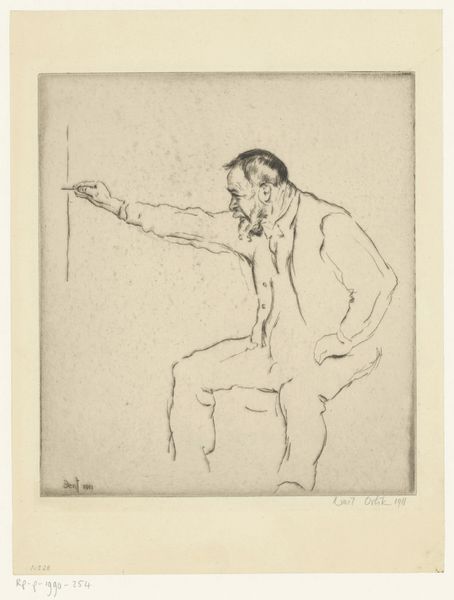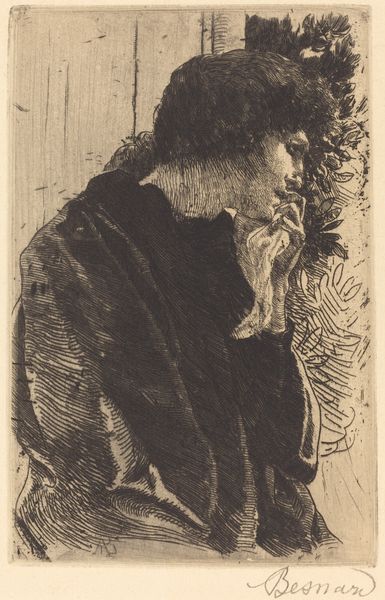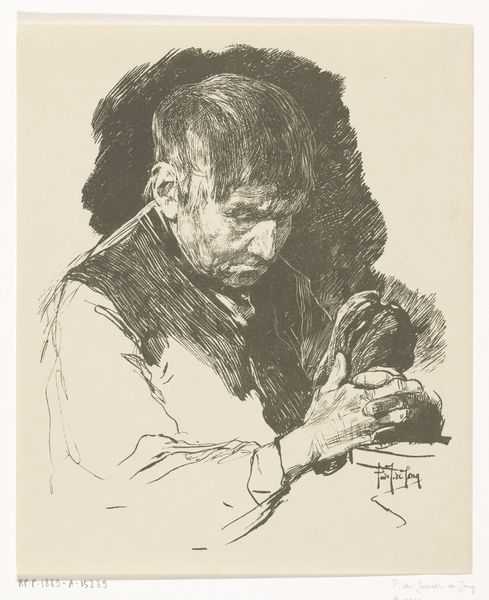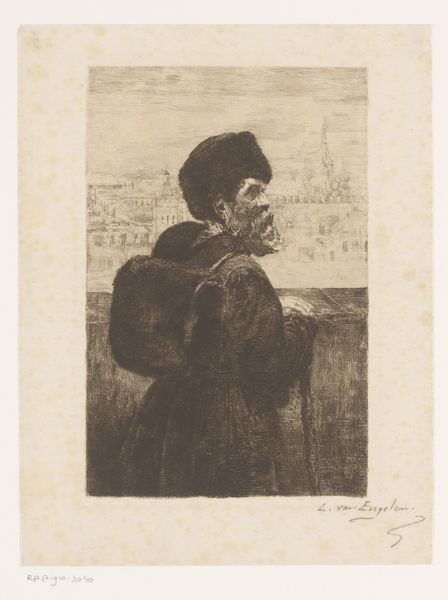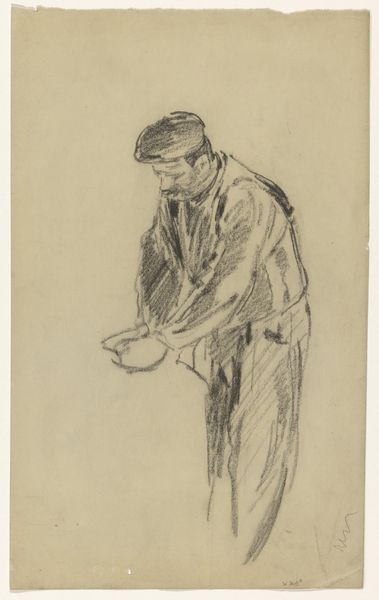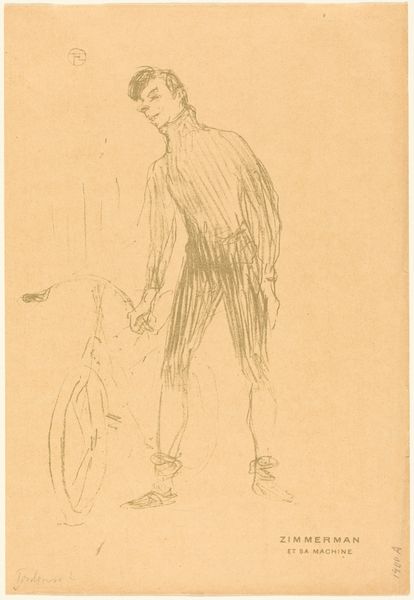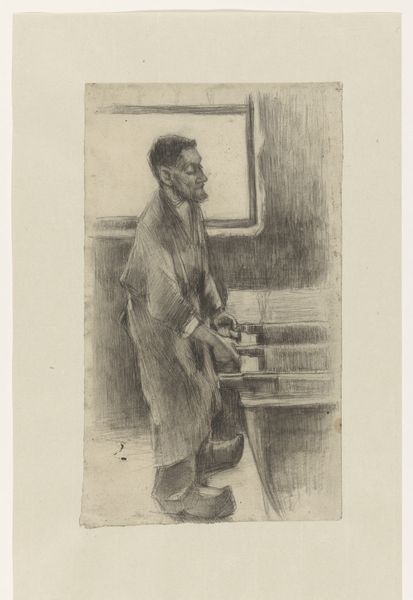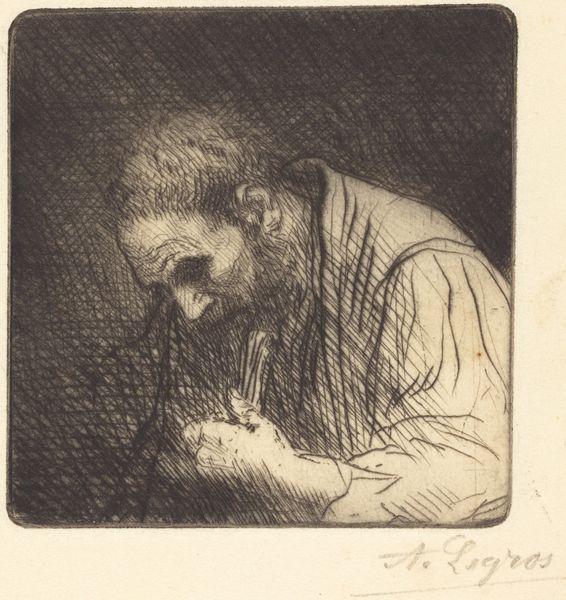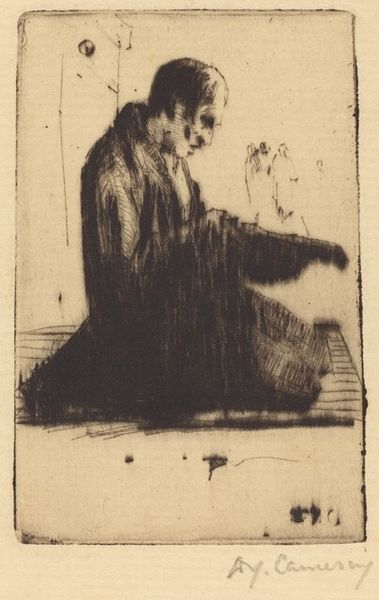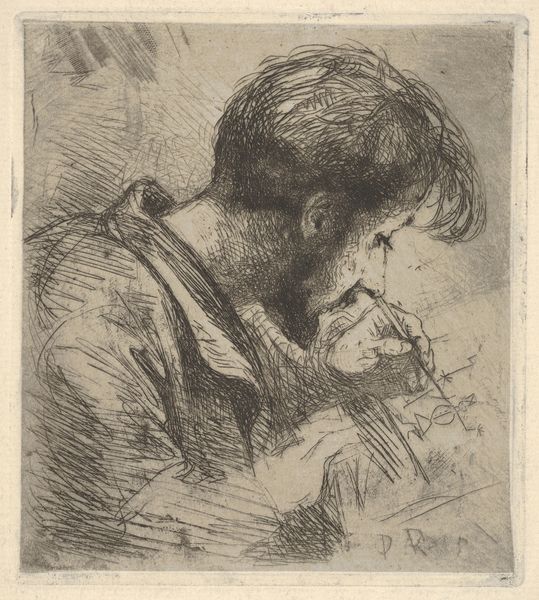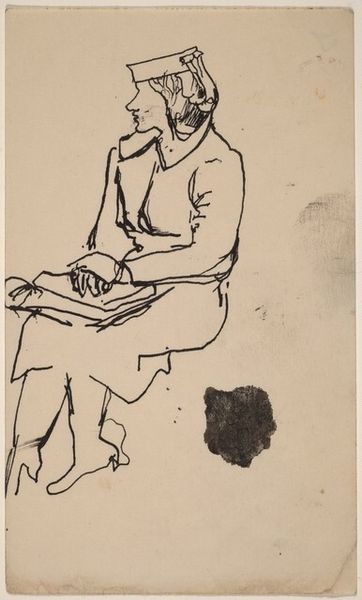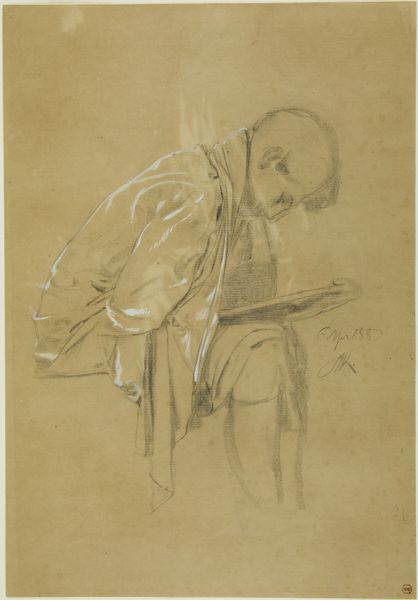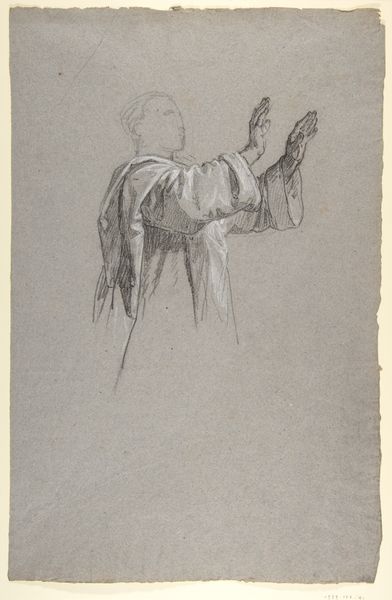
drawing, graphite
#
portrait
#
drawing
#
figuration
#
pencil drawing
#
graphite
#
realism
Dimensions: 373 mm (height) x 277 mm (width) (bladmaal)
Curator: Editor: This drawing, "Stående mand der klapper i hænderne" – "Standing Man Clapping" – by Hans Smidth, was created in 1894 using graphite. The pose feels theatrical. What strikes you when you look at it? Curator: What strikes me is how seemingly simple this sketch is, yet it holds so much potential for interpretation. Given its creation in 1894, consider the burgeoning labor movements. Could this clapping signify approval or solidarity within the working class? Editor: I hadn’t considered that context. It seemed like such a personal moment, an isolated figure caught in applause. Curator: But art rarely exists in a vacuum. Smidth was working in a time of significant social upheaval, a period of increasing class-consciousness. Do you see how the figure is rendered? There's a rawness to the drawing, almost unfinished. How might this stylistic choice speak to the artist's message about the subject, and potentially the era? Editor: Perhaps the rough style humanizes the subject, moving away from idealized representations of individuals. I wonder what or who he is clapping for? Curator: Exactly! Consider, too, the deliberate choice of graphite, a humble material. Smidth might be democratizing art, representing an ordinary man in an accessible medium, far from the grand oil paintings of the elite. Could it be about celebrating the unsung heroes of everyday life? Editor: That is a great perspective! I hadn’t appreciated how much the material itself and historical context could inform the reading of such an understated artwork. Curator: Art invites such questioning. The goal is to view it through a multi-faceted lens and to find new avenues for empathy and critical engagement.
Comments
No comments
Be the first to comment and join the conversation on the ultimate creative platform.
